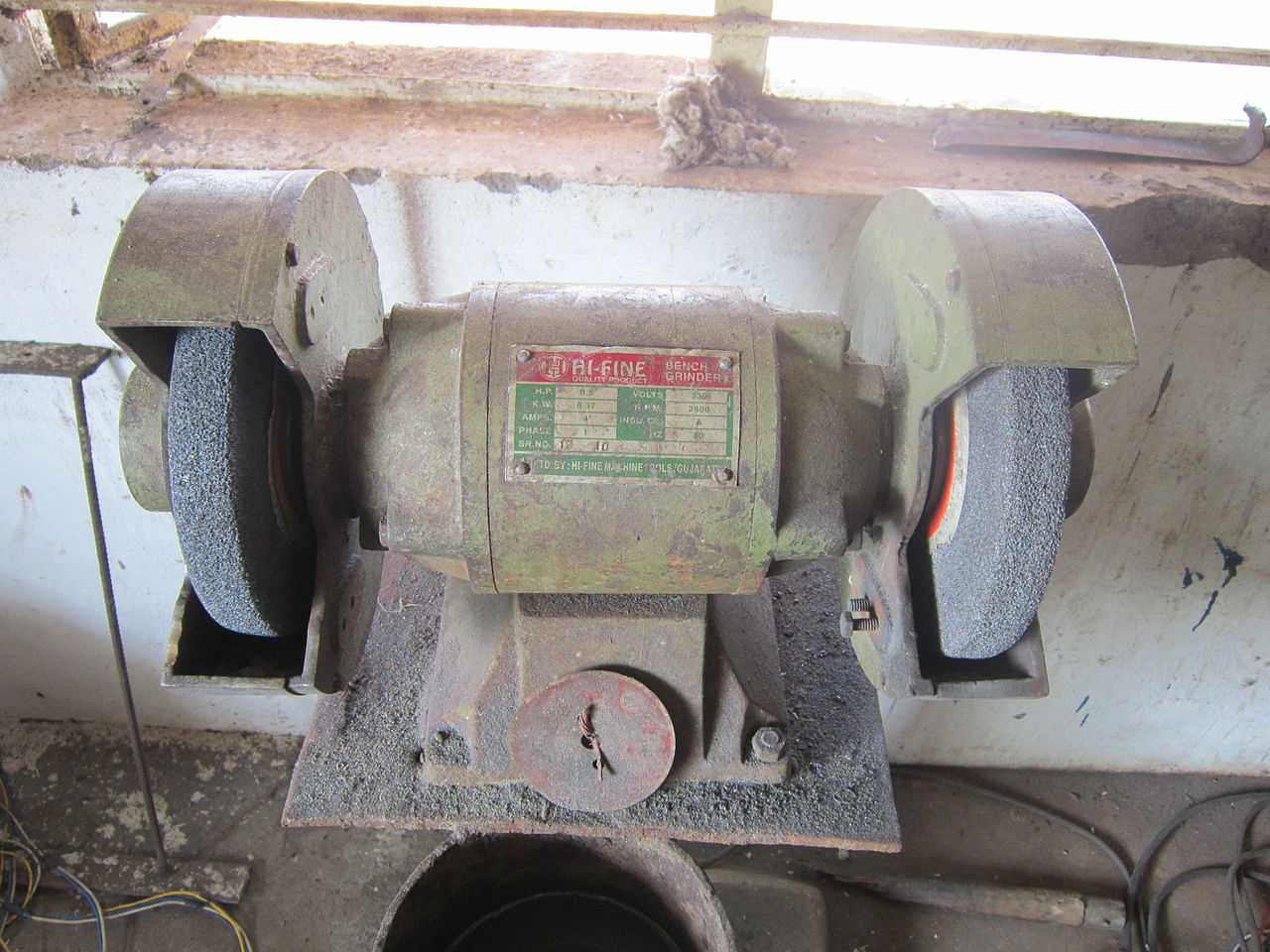Cross-grinding refers to sharpening skates with a grinding stone whose axis of rotation is parallel to the skate blade. This means that if you hold the skate sideways (blade parallel to the floor), the grinding wheel rotates down. This is how the ordinary bench grinders from the hardware store are set up.

In contrast, most skate sharpening machines have the grinding wheel oriented parallel to the blade. Its axis of rotation is up and down, 90 degrees from the axis on this bench grinder.

Such machines generally have a cross-grinding wheel as well as the main sharpening wheel. The people who do the sharpening may use the cross-grinding wheel to remove excessive rust or try to even the edges on new or poorly sharpened blades.
Sid Broadbent, who makes skate sharpening machines, has this to say about cross grinding:
We realize in the case of tabletop machines, their cross grinding capability is certainly advantageous for badly damaged hockey skates, but much of the time it is used whether needed or not. Excessive material is removed, a perfectly accurate groove is destroyed which then has to be reestablished. This excessive metal removal does not affect the overall geometry of a hockey blade since it is removed uniformly over the entire length of the skating surface—or should be. When this approach is used on figure skates, their effective life is reduced to about six sharpenings! An enormous and unnecessary waste of an expensive skate.
Broadbent, Skateology, VII:7
It seems to me that the problem here is more misuse of cross-grinding than use of it at all. I think what Broadbent is hinting at is that some skate sharpeners have this as their standard procedure:
- Cross-grind to make the blades “flat.”
- Put the right hollow on with the parallel stone.
I put “flat” in quotes in #1 because I want to bring up a point about cross-grinding that seems to have been forgotten: When you cross-grind a skate blade, the hollow does not become flat. It takes the radius of the grinding wheel. So, on the bench grinder pictured above, you may end up with a 3–4″ radius of hollow. Of course, this will change as the wheel wears down. But if you want, say, a 1/2″ hollow, and you happen to have a grinding wheel with a 1/2″ radius, you can get what you want by cross-grinding. Plus, you’ll be able to sharpen all the way up to the toe pick! A parallel sharpener can’t reach a small area just behind the toe pick because the diameter of the wheel is too large.
If you follow the procedure above, you’ll end up with uneven edges unless you’re careful to hold the blade perpendicular to the radius of the cross-grinding wheel. It’s tempting for sharpeners to think of the result of cross-grinding as “flat” and go from there when they put the final hollow on. But because the hollow is not actually flat, a new hollow that looks centered will actually be slightly off-center. That’s because sharpeners use witness marks to align the blade in the holder for sharpening described by Broadbent (VII:1–VII:5). These are marks made on the groove of the blade by lightly touching it to the grinding wheel. When they’re centered, you have the blade aligned…as long as the original groove was centered! If it wasn’t, you need to make a correction.
Determination of the amount of height correction to remedy a specific out-of-squareness error is a matter of experience and experimentation. In any case the effect of any correction would be assessed at intervals throughout the sharpening process by removing the carriage and checking edge squareness with the precision square … then making any further necessary height adjustments.
Broadbent, Skateology, VII:4
That makes sharpening much more complex. And you don’t realize that the the blade is out of square (or the edges are uneven) because you think the cross-grinder made them flat, they’ll never become even. For a figure skater, having uneven edges feels like one side is too sharp and the other side is too dull.
Don’t cross-grind unless you’re careful about not taking off too much blade and making sure the edges are even. But when done properly, cross-grinding can actually work out well.
Reference
Sidney Broadbent. 1997. Skateology: A Technical Manual for Skaters Regarding Skates, Skating Fundamentals, Skate Sharpening. Revised ed. Littleton, CO: ICEskate Conditioning Equipment.

[…] The advertisement says it’s good for “Lengthwise and Cross” grinding. The picture in the advertisement above looks like the wheel is set up for cross grinding. […]
[…] previously wrote about what cross-grinding is and why it’s not always bad. Here is a photo of one of my skates […]